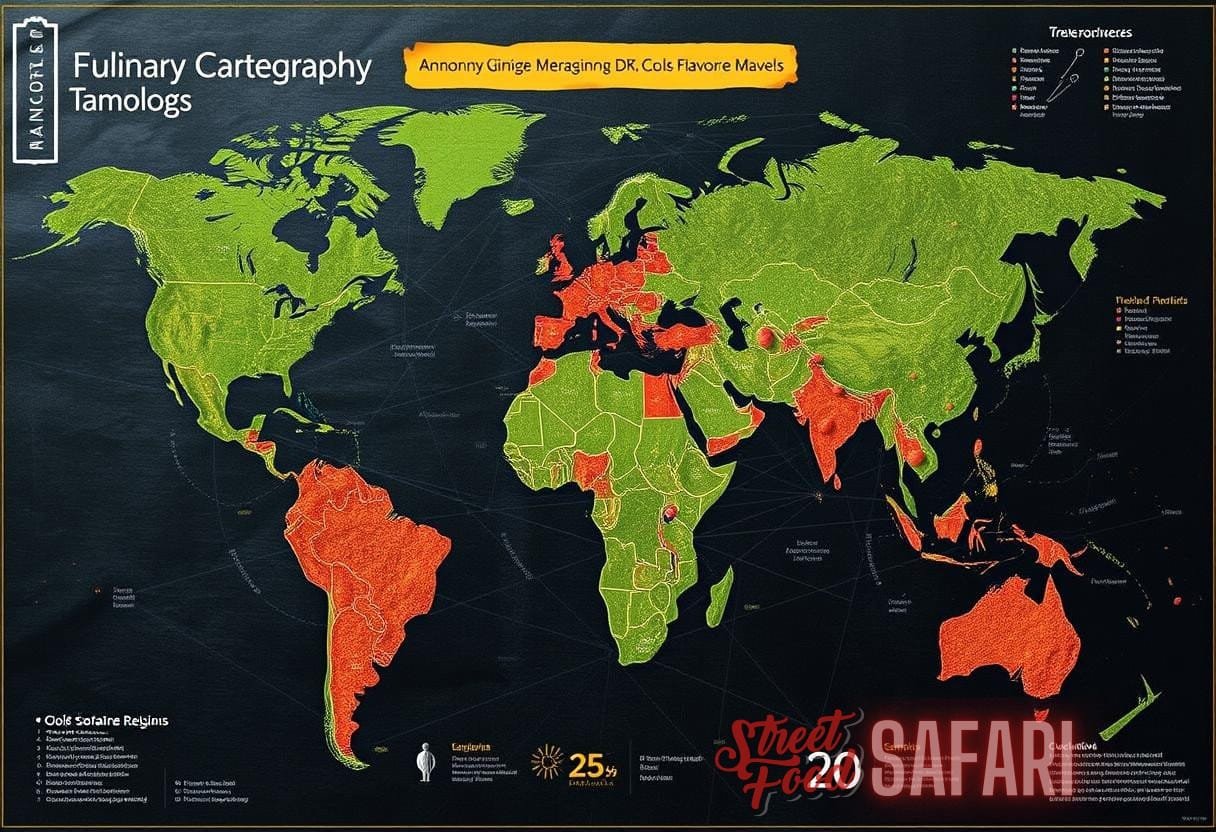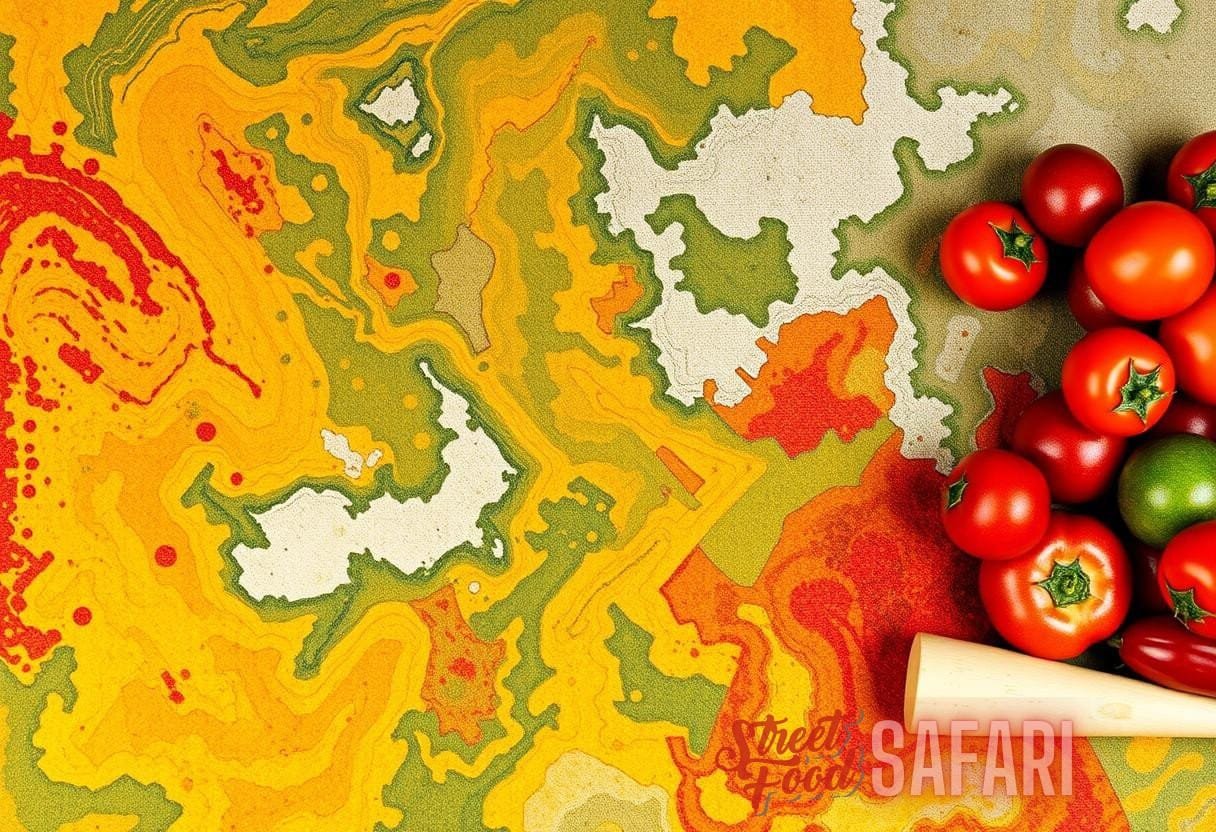Culinary Cartography: Mapping the Interconnected Flavors of Global Food Markets
In an ever-globalizing world, the significance of food transcends mere sustenance; it encompasses culture, history, and identity. The term global flavor mapping reflects the intricate relationships among flavors from different regions around the planet, illustrating how cultural exchanges, trade routes, and regional ingredients have formed a complex web of culinary practices.
The Concept of Culinary Cartography
Culinary cartography is a fascinating discipline that examines the interconnectedness of food, geography, and cultural identity. It utilizes mapping techniques to represent food systems, regional cuisines, and the relationships between ingredients. By employing a geographic lens, food enthusiasts and researchers can visualize the dynamic exchanges that occur through migration, trade, and globalization.
The Importance of Mapping Flavors
Mapping flavors serves several crucial purposes:
- Cultural Preservation: By documenting traditional cuisines and local ingredients, culinary cartography helps preserve cultural heritage.
- Regional Identity: Mapping allows for the acknowledgment and celebration of regional specialties, fostering a sense of pride among communities.
- Awareness of Global Trends: Understanding how flavors spread via migration and trade can highlight culinary fusions and trends emerging around the world.
The Historical Context of Global Flavor Mapping
The roots of global flavor mapping can be traced back centuries, as civilizations have always been shaped by their culinary practices. The Silk Road, for instance, facilitated the exchange of spices, herbs, and other commodities between the East and West, creating an enduring legacy of culinary influence. According to data from the Harvard Kennedy School, the rise of global trade networks in the 19th century further catalyzed the distribution of flavors across the globe.
Modern-day culinary practices continue this trend, with globalization leading to the fusion of flavors. Migration patterns significantly contribute to culinary diversity, as new communities bring traditional recipes and local ingredients to their new homes. In today’s digitally connected world, we find resources like local food markets serving as melting pots of culinary diversity, representing the flavors of various cultures.
The Role of Technology in Culinary Cartography
Technology plays a pivotal role in the evolution of culinary cartography. The use of Geographic Information Systems (GIS) allows for detailed mapping of food systems, highlighting regional flavor profiles and their correlations with geography. These tools have made the global flavor mapping process more accessible to researchers and enthusiasts alike.
Applications of Technology in Mapping Global Flavors
Technological advancements have led to several applications in culinary cartography:
- Data Collection: Crowdsourced data platforms aggregate user-generated content around food experiences, allowing for a broad understanding of global flavors.
- Social Media Insights: Trending hashtags and viral recipes provide real-time data on popular flavors and dishes across the globe.
- Mobile Applications: Food apps enable users to explore culinary maps, discover local delicacies, and learn about the origins of ingredients.
Regional Flavor Profiles and Their Interconnectedness
A comprehensive approach to global flavor mapping involves examining how specific regions have developed unique flavor profiles and how these profiles interact.
1. Asia: A Melting Pot of Flavors
Asia is renowned for its diverse and intricate flavor profiles shaped by centuries of cultural exchange. Key components include:
- Spices: India’s use of turmeric, cumin, and cardamom.
- Fermentation: East Asian staples like soy sauce and kimchi.
- Umami: Present in dishes from Japan and China, with ingredients such as miso and shiitake mushrooms.
The interconnectedness of these flavors is perhaps best illustrated through the evolution of curry, which has roots in South Asia and has spread globally, evolving to include local ingredients and adaptations.
2. Europe: Tradition Meets Innovation
European cuisine boasts a rich tapestry of flavors, with each region offering distinctive contributions:
- Herbs and Oils: Mediterranean countries are known for their use of basil, olive oil, and garlic.
- Charcuterie: France’s influence on cured meats and cheeses.
- Pastries: The proliferation of baked goods that reflect local ingredients and cultural practices.

The influence of colonialism and trade has allowed European flavor profiles to incorporate spices and ingredients from around the world, further enriching their culinary landscape.
3. Africa: A Symphony of Local Ingredients
Africa’s culinary diversity is shaped by its climates, cultures, and history. Significant factors include:
- Staples: Maize, sorghum, and yams form the base of many diets.
- Spices: The use of harissa in North African cuisine and peri-peri sauces in Southern Africa.
- Seasoning Techniques: Fermentation is crucial in many cultures, affecting flavor development in food preservation.
The interconnectedness of African cuisine with elements from Arab, European, and Indigenous practices has created a unique culinary identity across the continent.
4. The Americas: A Tapestry of Traditions
The gastronomic landscape of the Americas is as diverse as its population. Major elements include:
- Indigenous Ingredients: The prominence of corn, beans, and squash in traditional cooking.
- Global Influences: The influx of European, African, and Asian cooking methods and ingredients.
- Fusion Cuisine: The creation of dishes like Tex-Mex, which blends traditional Mexican recipes with American tastes.
This intermingling has formed vibrant culinary scenes in cities such as New York, Los Angeles, and Sao Paulo, where the mixture of various cooking traditions is celebrated.
Case Studies in Global Flavor Mapping
To further illustrate the concepts of culinary cartography and global flavor mapping, we look at specific case studies that showcase how flavors from different regions intersect and evolve.
The Rise of Pho: A Vietnamese Staple
Vietnamese pho exemplifies the interplay of history, culture, and regional flavors. Its roots lie in French colonial influence, yet it has evolved into a distinct dish that incorporates local ingredients such as rice noodles, herbs, and spices. The collaboration of various culinary traditions—Chinese, French, and Southeast Asian—highlights how flavors travel and transform.
Mexican Cuisine in the U.S.
Mexican food has permeated American culinary culture, leading to a myriad of adaptations and fusions. Dishes like burritos and nachos emerged from the fusion of Mexican flavors with American ingredients, reflecting the broader context of cultural integration in food practices.
The Migrant Kitchen project showcases how immigrant chefs are transforming traditional cuisines in America, presenting flavors that tell stories of home while adapting to new environments.
Global Flavor Mapping: The Future of Gastronomy
The future of culinary cartography and global flavor mapping promises exciting advancements, particularly in sustainability and cultural awareness. The culinary world is increasingly focused on sourcing local ingredients and celebrating seasonal flavors, which not only honors tradition but also supports sustainable food systems.
In addition, as food movements gain momentum, the documentation of flavors based on climate change, modern technology, and shifting demographics will continually reshape the culinary landscape. The integration of food education into academic curricula, as well as community-based culinary projects, serves to elevate awareness and preservation of traditional cuisines.
Conclusion: Culinary Cartography as a Reflection of Cultural Exchange
The intricate tapestry of global flavors and culinary traditions highlights the rich narrative of human connection through food. By embracing the concept of global flavor mapping, we acknowledge the ever-evolving nature of cuisine, recognizing it as a dynamic reflection of cultural exchange, innovation, and identity.



